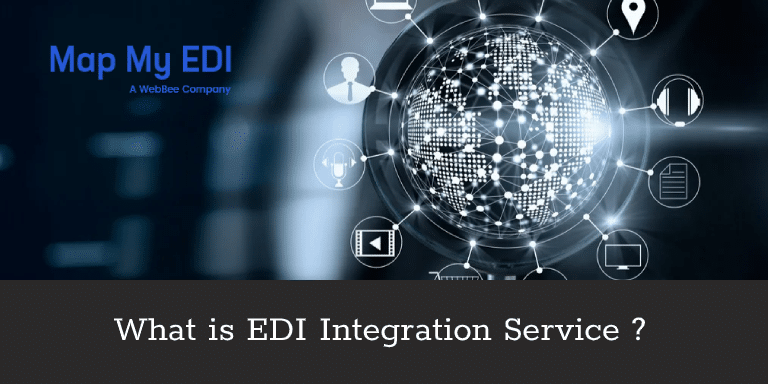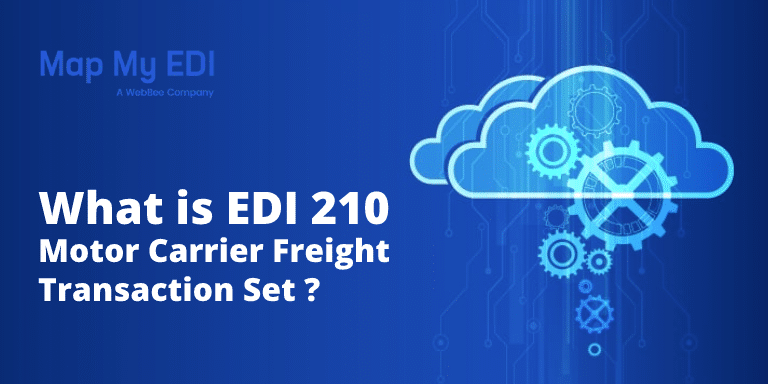Why EDI Implementation is Essential for Modern Day Business
Electronic Data Interchange (EDI) implementation is a process of deploying or implementing EDI solutions or services to make the business EDI enabled with a trading partner.
EDI implementation guide
EDI implementation guide is referred to a set of rules defined by companies before exchanging EDI files among themselves. It also denotes the way of processing, establishing and documenting these rules. So, this document is referred to as the implementation guide.
Generally speaking, the Implementation guide includes the validity of a value in a data element, the number of times a loop or group of segments is used or the requirement of an optional or mandatory data segment. It is the most significant document for a user who wants to create a mapping of the corresponding EDI file to/from an existing system. Therefore, if an implementation guideline documented is well written then it would be the only document required for creating an EDI processing solution.
EDI implementation steps
The implementation of EDI across your organization and network of trading partners can be a tedious and convoluted process. Therefore, it’s important to have a systematic approach that will help us in delivering a successful EDI programme.
A well structured 10 step implementation process for effective EDI implantation comprises of the following steps:-
Step- 1
Developing the organizational structure
The first major step is to make sure that you have the access to accurate skills. Therefore, it’s time to develop EDI coordinators and teams which can drive the programme through your organization.
Step-2
Undertaking a strategic review
In every organization, the business areas that benefit from EDI vary. So, it is important to have a strategic view that can identify which business area has the greatest potential in your business.
Step-3
Conducting detailed analysis
It is essential to conduct a detailed and accurate analysis of costs and projected payback when EDI is implemented.
Step-4
Developing an EDI solution that is completely business-focused
As we want to select a suitable EDI solution for our business, it is very essential that we should have a logical understanding of business and technical issues that can make a good impact on our and our trading partners.
Step-5
Selecting the appropriate EDI network provider (VAN)
It is a common belief of many companies that EDI providers have superior business and financial sense. Therefore, it is important to select an appropriate EDI provider for your business.
Step-6
Integrating EDI with the business
The integration of EDI with the business is imperative. It is because every EDI system is developed and designed in a manner that it can identify the amount of custom work required and the amount of internal data with which it needs to share data.
Step-7
Integrating data across the business
There are many applications that have their own data structures. As a result, it is important to analyze data from internal and external systems to make sure that they get translated into your EDI system.
Step-8
Undertaking data mapping
For ensuring the smooth flowing of information between internal applications and trading partners, it is important that documents are mapped properly to allow efficient data transmission.
Step-9
Establishing a pilot project
Before making your EDI system “live” within your complete trading community, it is very important to choose and pick a small number of partners who can analyze the system in “near live” conditions.
Step-10
Rolling out EDI to trading partners
As a concluding point, the last accomplishment is to execute EDI across your trading associates in an organized manner that can replicate your accessible business concerns and predilection.
EDI implementation issues
To improve supply chain management, EDI is a significant tool that brings visibility, optimization and stability to businesses. Against all odds, there are five major EDI implementation issues that should be discussed at length. These five main EDI implementation issues are: –
Underrating the complexity of supply chain
The impact of globalization has resulted in larger supply chains. If it has magnified the benefits of EDI implementation then it has also posed many challenges. An inflexible EDI system will fail to connect all the business partners and could leave your company struggling with manual inputs and ad-hoc procedures that can jeopardize your business plans and investments. EDI is the best way to overcome these complexities but underrating your supply chain can ruin a project. It should be remembered that EDI is a methodology comprising of many sets of standards and transmission protocols. Therefore, your solutions should be streamlined with the requirements of your business and all of the businesses that are contained by your supply chain.
Selecting the incorrect type of EDI
Selecting an appropriate EDI for your business is a critical decision that can make a big impact on your entire experience with EDI. So, do pick and choose the most appropriate EDI for your business.
There are 3 main types of EDI and they are: – Direct EDI (Point-to-Point EDI), EDI via VAN (or Value Added Network) and Web EDI.
Corrupted or incomplete data
There are many EDI transaction code that cannot be read or understand by humans. It implies that spotting and fixing errors can be a challenging task and requires special skills. Manual error detection can be expensive, inaccurate and time-consuming and can result in more transaction errors. While working with appropriate EDI, your existing data can be put to test and this can simplify the creation of data over time.
Disregarding about security
Despite the fact that EDI connects you well with your supply chain partners but it also exposes critical elements of your internal systems to them and vice versa. The international associations can set hurdles matters as it would be accumulating different legal frameworks, cultural expectations and confidentiality and data protection rules.
Escalating costs
It’s true that EDI solutions can rationalize your logistics and supply chain relationships but get started with it can be expensive for you. The cost of EDI can escalate if you are flooded by implementation issues. In adding up, buying software and hardware for EDI transactions demands considerable monetary capital and also in-house preservation. It means that you have to offer skilled IT teams who are capable of EDI. The growing volumes of data and errors in data quality will add to the cost of maintenance.
How to set up EDI?
EDI documents can be sent in three main steps and they are:-
Step-1
Preparing the documents to be sent
Firstly, it’s important to collect and organize the data in a systematic way. The data can be sourced and methods to generate the electronic data comprises of exporting PC-based data from spreadsheets or databases, human data entry, purchasing application software that has fitted interface for EDI files, reformatted electronic information into data files and ornamental obtainable applications to mechanically generate output files which are prepared for conversion into an EDI standard.
Step-2
Translating the document into EDI format
The next key step is to feed your electronic data through translator software which has the capacity to exchange your internal data format into the EDI standard format using appropriate segments and data fundamentals. Ideal translation software is the one that can ensemble any computing environment and budget.
Step-3
Transmitting the EDI documents to your partner
After translating business documents into a suitable EDI format, it’s time to transmit it your partners through three different ways and they are:
- Connecting directly by using AS2 or another secure internet protocol
- Connecting to an EDI Network Provider (also referred to as a VAN provider) by using your favoured communications protocol
- Combination of the both, depending on the volume of transactions to be exchanged or on a particular partner
In case you are looking for EDI implementations, drop your enquiries at https://mapmyedi.com for all the support necessary as and when your business requires it.





